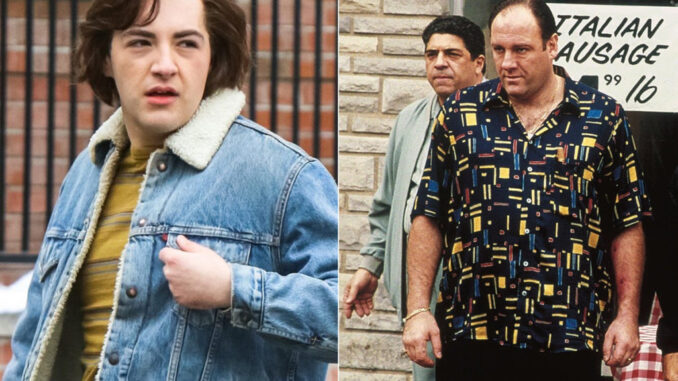
If you’re a fan of The Sopranos, then The Many Saints of Newark is like finding a stash of gabagool in your fridge—a delicious treat that reminds you of why you fell in love with the show in the first place. This prequel, helmed by the show’s creator David Chase, takes us back to the gritty streets of Newark in the 1960s, exploring the origins of the legendary mob boss Tony Soprano and the intricate family ties that shaped him. Buckle up, because we’re diving deep into this riveting journey through the Sopranos’ universe!
A Welcome Return to Familiar Turf
For those who’ve spent countless hours immersed in the world of The Sopranos, returning to Newark feels like coming home. Chase knows this landscape like the back of his hand. The storytelling in The Many Saints of Newark is rich and intoxicating, offering fans a chance to breathe in the air that his characters inhabit.
Nostalgia Meets New Perspectives
Set against the backdrop of a racially charged America, the film paints a vivid picture of the changing landscape in Northern New Jersey. We get a closer look at the Moltisantis and the Sopranos—two families entwined in the mob scene, each carrying their own set of dramas and rivalries.
Christopher Moltisanti (played by Michael Imperioli) narrates the film, adding a layer of meta-commentary that fans will appreciate. His voice guides us through the story, even though, at the film’s start, he hasn’t even been born yet. This clever narrative device hints at the inevitability of fate and the inescapable ties of family.
Meet the New Faces of Old Friends
At the heart of The Many Saints of Newark is Dickie Moltisanti, portrayed by Alessandro Nivola. Dickie is a rising figure in the Newark mob scene, navigating the complexities of family loyalty while shaping young Tony Soprano’s future. We also meet other pivotal characters like Harold McBrayer (played by Leslie Odom Jr.) and Corrado “Junior” Soprano (portrayed by Corey Stoll), who all play significant roles in this tangled web of crime and kinship.
Ray Liotta’s Double Trouble
One of the standout performances comes from Ray Liotta, who plays two roles: Hollywood Dick Moltisanti and his brother, Sal Moltisanti. This duality highlights the inner conflict and turmoil that family members often face in the mob world. Liotta delivers some of his most compelling work since his iconic role in Goodfellas.
“Maybe some of the things you do aren’t God’s favorite,” he tells Dickie, perfectly capturing the moral complexities that the film explores.
The Themes That Bind Us
At its core, The Many Saints of Newark delves into themes of family, loyalty, and the cycle of violence that often defines mob life. It asks hard questions about masculinity and role models while also exploring how the sins of the father can shape the son.
Faith and Family
Chase’s screenplay, co-written with Lawrence Konner, tackles how history tends to repeat itself unless someone breaks the chain. It’s not just about mob life; it’s about the universal struggle to escape the shadows of our predecessors.
As we follow young Tony Soprano, played by Michael Gandolfini—the son of the late James Gandolfini—we see how Dickie’s influence shapes Tony’s future decisions. This layered storytelling offers a poignant look at how familial legacies are passed down, often leading to inevitable fates.
The Emotional Stakes
The film also doesn’t shy away from emotional depth. Moments of levity are interspersed with serious reflections on life and death, making the characters feel authentic and relatable. Chase masterfully balances the tone, recalling the best elements of The Sopranos while carving out its unique narrative.
A Cinematic Experience
Directed by Alan Taylor, also a veteran of The Sopranos, the film excels in period detail, transporting viewers back to a time filled with rich culture and complex societal issues. From baseball games for the blind to the lively streets of Newark, the film captures the essence of the era.
Stunning Performances
Vera Farmiga’s portrayal of Livia Soprano pays tribute to the original character played by Nancy Marchand. Farmiga brings a fresh yet familiar energy that adds layers to Livia’s character. Meanwhile, John Magaro steals scenes as a young Silvio Dante, delivering a spot-on impression of Steven Van Zandt that’s sure to bring a smile to fans’ faces.
The Ending: A Thoughtful Closure
Without giving too much away, the film’s conclusion resonates deeply, echoing the themes of inevitability and the cyclical nature of violence. The abrupt ending serves as a reminder of how quickly things can change in the world of organized crime, leaving viewers with a bittersweet sense of closure.
Why It’s Not for Newbies
It’s important to note that The Many Saints of Newark isn’t an entry point for those new to The Sopranos. It’s designed for superfans who will appreciate the callbacks, the character development, and the rich backstory it provides. New viewers might find themselves lost in the intricate details and future spoilers that can detract from the original series’ impact.
Conclusion
The Many Saints of Newark is a master class in storytelling, a celebration of the characters we’ve come to love, and a deep dive into the origins of Tony Soprano. David Chase has created a film that stands on its own while also enriching the lore of The Sopranos. If you’re a die-hard fan, this film is an absolute must-watch—it’s like getting the inside scoop on your favorite family drama, complete with all the excitement, emotion, and intensity that defined the original series.
